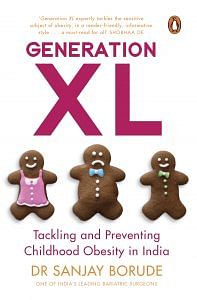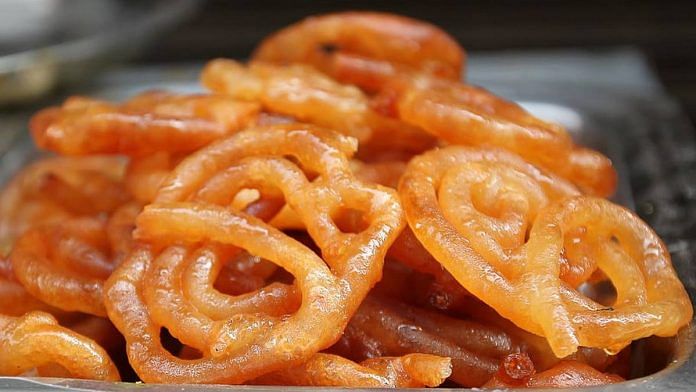How we wish we could just keep eating like Kung Fu Panda and still be a ‘Dragon Warrior’, don’t we?
Let us first understand the molecular or basic mechanism of obesity. The body contains many types of tissues. The ones we are interested in are known as fat cells or adipocytes whose main function is to cushion and insulate the body. But wait . . . adipocytes are not the villains of this story. During the growth phase of a child, the number of adipocytes keeps increasing. The body uses the fat it needs and stores the rest, but this is where the problem begins—this storage causes the size of adipocytes to increase.
Any further intake sets off an unhealthy chain reaction—when more fat is stored, adipocytes further increase in size, and this ultimately leads to obesity. That wasn’t tough to understand, right?
Weight loss programmes, therefore, could help decrease the size of these adipocytes but not their numbers. This means that once a person is obese, they need to continue weight loss exercises for life to avoid an increase in the size of adipocytes.
Emotional Context of Food in India
India is the land of many things, including food. Beyond nutrition, it is a source of comfort, nostalgia, mental wellness and celebrations. With time, festivals have also transpired as occasions to indulge in celebratory meals wherein food plays a huge role. For instance, there is a lot of indulgence in sweets during festivals like Diwali and Christmas. When on a fast, people are encouraged to consume high-calorie or high-carbohydrate foods.
Food is also an emotional anchor. Fried goodies are associated with the rains while winters call for rich, greasy fare. Recipes from grandmothers’ and mothers’ kitchens have nostalgic value and often become comfort food. This emphasizes the importance of food as nourishment, as celebration and as a way of living among Indians.
Dieting, fasting and other adapted dietary habits are also celebrated in modern India and have found space along with a side dish of exercise and yoga. We are a food-loving community and obesity is a result of this love. Often, genes also predispose individuals to obesity.
While obesity is not a crime or an individual flaw, it is a silent, and sometimes violent, killer as it is associated with a number of diseases.
The consequences of obesity range from general health issues to heart problems to poor self-esteem. It is critical to check this generation’s march towards XL and the plus size. If obesity catches up with them at a younger age, ailments will affect children earlier than they did for the previous generations. There is an urgent need to draw up a plan to check increasing obesity rates among children. But first, we need to identify the root cause.
For the last two decades, India has been termed as a ‘fast growing economy’. What are its implications on obesity? As per a report in the Indian Journal of Medical Research, ‘We are in the middle of major epidemiological, nutritional and demographic transitions that tend to promote obesity in all age groups.’ But when one looks at the prevalence of obesity alone, there is no clear, secular trend.
Also Read: Obesity and depression are related. The world is feeling the weight
So Why Is Childhood Obesity on the Rise?
It is increasingly being recognized that parents’ perception of their child’s weight is an important factor in planning public health interventions to reduce the prevalence of obesity.
I understand that being a parent, especially a first-time one, is serious business, which one undertakes without prior experience. We all try to do our best for our children. Many studies have revealed that parents fail to correctly gauge that their children are overweight. In several cases, parents also fail to recognize early symptoms of obesity. In case of a diagnosis, parents should first understand the determinants of obesity before embarking on the journey of diet/exercise and medication and seek appropriate help from their doctor.
It is extremely important to have a 360-degree view of the causative factors of your child’s obesity even though, more often than not, a sedentary lifestyle and dietary habits top the list.
Now, let us take a closer look at Mumbai’s obesity map to find a few illustrative answers regarding the state of obesity in the region. In 2010, doctors from a medical school in south Mumbai visited four schools to study the prevalence of obesity among their students. Two of the chosen schools were privately run and located in affluent areas in the city, while the other two were run by the municipal corporation with children hailing from less affluent economic backgrounds going there to study. From this study, it was observed that more boys than girls were overweight or obese. Secondly, children in the private schools were significantly heavier than those in government schools.
Clearly, we could all have guessed the result. But what interested me was that the affluent families are more educated compared to the families of children studying in municipal schools. With more access to resources and information, the former should have healthier habits. But assumptions, even if logical, are not facts. This also highlighted the gender difference in the incidence of obesity among children.
Obesity is accompanied by a plethora of diseases as mentioned. After understanding the consequences or rather the companion diseases of obesity, it is important for parents to know the reason(s) for obesity among children.
Also Read: Anaemia, obesity on the rise in India as NFHS-5 reveals falling nutritional indicators
Food
Food is perceived as the primary reason of obesity but it is not food per se that is the problem. The type of food a child consumes, portions served on their plate, the consumption of high-calorie snacks and/or colas and, their attitude towards food form the crux of the matter. It is high time that we revert to our healthy Indian diets rather than adopt the popular cuisine of fast foods. Socio-economic status also has significant implications for obesity risk as it increases spending capacity.
Lack of Physical Activity
The next important culprit that adds kilos to the scale is low or absolute lack of physical activity. Along with these major contributing factors, we should also be aware of the role played by genetic make-up and hormonal imbalances that leave only surgery as the main, viable option for obesity treatment. Parental obesity is considered a stronger predictor of obesity in adulthood than the child’s weight status at less than 3 years of age. There are genetic factors that can influence the susceptibility of a given child to an obesity-conducive environment.
It is also observed in a few studies that family incomes also play an important role in constituting the child’s obesity.
Some studies say that being breastfed for longer than six months reduce the chances of a child becoming overweight later in life by about 20 to 40 per cent. Others suggest that excessive non-vegetarian food can also be problematic, since the excess protein from meat, if not burned through exercise, is deposited as fat. In my own research in adult patients, this was found to be untrue.
A commonsensical answer would be that obesity results from an imbalance between the energy (calories) consumed and the calories burnt with exercise.
Technology
Another monster is the evolution of technology. In an era where gaming consoles and computer games are found practically in every house, children don’t get an opportunity to burn the calories they consume. They sit hunched up in front of their consoles or study tables instead of running around on playgrounds. However, between diet and exercise, research has shown that diets are far more important in weight loss than exercise. While physical activity is a great complementary measure, the focus must remain on consuming whole foods that are low on calories but provide ample nutrition. It takes half-an-hour of running to burn 300 calories, but two minutes or less to consume them.
Speaking of consuming fewer calories, a typical Indian school child in an urban setting is likely to carry two lunch boxes to school. As working parents are unlikely to have time to cook fresh food every day, chances are that at least one box would have ready-to-eat high-calorie packaged foods like chips, biscuits, cakes, etc. Once back home, the child will eat a meal before playing digital games or finishing homework. This sedentariness that has crept into every child’s life is one of the biggest culprits in the obesity epidemic. Combine this with junk food and the obesity puzzle seems almost complete.
As per the Indian Journal of Medical Research, ‘Low levels of physical activity are definitely promoted by an automated and automobile-oriented environment that is conducive to a sedentary lifestyle. Community design and infrastructure characteristics are also becoming increasingly important in determining levels of obesity in populations. Such factors include availability of safe walkways, bicycle paths, playgrounds and other avenues for physical activity-related recreation.’
 This excerpt from ‘Generation XL: Tackling and Preventing Childhood Obesity in India’ by Dr Sanjay Borude has been published with permission from Penguin Random House India. .
This excerpt from ‘Generation XL: Tackling and Preventing Childhood Obesity in India’ by Dr Sanjay Borude has been published with permission from Penguin Random House India. .



